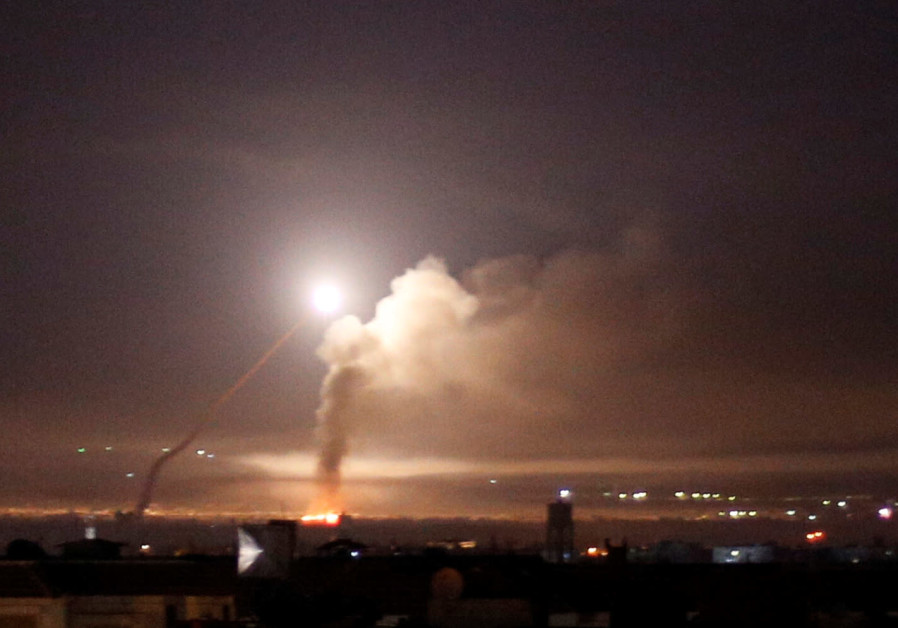A source close to the Syrian rebels said that Syrians in the north heard missiles fly over their locations on Sunday before explosions near Aleppo’s Nayrab Airport in the evening.

Asource close to the Syrian rebels said that Syrians in the northern Idlib province heard missiles fly over their locations on Sunday before explosions occurred near Aleppo’s Nayrab Airport in the evening.
“It is a strong message to Iran,” a man familiar with the situation told the The Jerusalem Post. “Iran must get out entirely from Syria, not only keep away from the border [with Israel].” The source said that many Iranian-backed militias had been harmed in the Sunday air strike. These included militias from Iraq who were based at the location.
The Syrian Observatory for Human Rights reported the base was run by Iran’s Islamic Revolutionary Guard Corps and that nine people had been killed, including six Syrian volunteers. The identities of the other three people are unknown, it said on Monday.
Syrian state media claimed that it was the “Zionist enemy” who had targeted the site near Aleppo’s airport, but the strike only caused “material damage,” the regime claimed. Iranian state media sought to emphasize that Israel was supporting Syrian rebels opposing Syrian President Bashar Assad’s regime and that the air strikes in northern Syria is connected to opposing the regime’s offensive in the south, near the Golan. This narrative has been pushed by those close to and supporting the regime.
Other popular commentators on the region, however, argued these claims.
Bassam Jaara noted that Iran’s IRGC took major losses in the strike. Likewise, he wondered, “Israeli warplanes flew more than 400 kilometers to bomb military positions of sectarian militia near Nayrab without being noticed?”
The difficulty of reaching the target near Aleppo provides an added layer of mystery to the air strike. Aleppo’s Nayrab airbase is only 10 km. from Syrian rebel positions in Idlib and 20 km. from Turkish observations points in northern Syria. It is also only 50 km. from US-led coalition-controlled areas near Manbij.
To make matters worse, any airplane attempting to strike Aleppo might have to approach via the sea and circumvent the Russian air defenses in Latakia where the Russians have a naval base. At the same time as the strikes, sources in Tartus and Latakia claimed that they saw “several ballistic missiles over the Syrian coast heading toward Deir Ez Zur.” Two hours before that, at 8:47 p.m., another report from Syria claimed air defenses at Khmeimim airbase in Latakia, where Russian air forces are based, confronted a “hostile target” and struck it.
A variety of Shi’ite militias have been associated with Nayrab over the years. A 2017 report named the Liwa Ammar ibn Yasir and other brigades such as the Liwa al-Hamad; the former has been closely linked to Hezbollah and both are linked to Hezbollah al-Nujaba. Al-Nujaba was one of the first Iraqi Shi’ite militias to fight in Syria and some of its units were deployed to the Aleppo countryside. Like other units connected to Iran’s IRGC, they are close to Quds Force commander Qasem Soleimani and their flag has the typical yellow background with Hezbollah-style rifle on it.
The raid came after Prime Minister Benjamin Netanyahu met Russian President Vladimir Putin, and on the eve of the meeting between Putin and US president Donald Trump. Jerusalem has warned that it will not tolerate Iran’s continuing presence in Syria, and Netanyahu warned in mid-June that Iran must leave Syria. Israel was accused of carrying out a strike in mid-June against the Iraqi Shi’ite militia Kata’ib Hezbollah in Syria near the Iraqi border. An air strike in Aleppo, navigating the heart of Russian and regime air defenses, would send a message that IRGC-backed militias can be struck anywhere.
As reported by The Jerusalem Post
